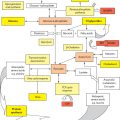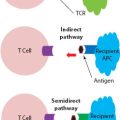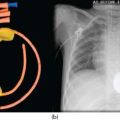Figure 28.1 First three human recipients to have prolonged survival after liver replacements in July and August 1967. The adult, Carl Groth, was a senior surgical resident from the University of Stockholm who was a Fulbright Scholar and transplant fellow at the University of Colorado during 1966–1968.
Transplantation of other extrarenal organs followed close behind the liver, using similar immunosuppression. Hearts were successfully transplanted in 1968 in Capetown by Barnard [62] and in Palo Alto by Shumway [63]. In 1969, the first prolonged survival after human lung [64] and pancreas transplantation [65] was accomplished in Ghent and Minneapolis, respectively. But transplantation of the extra-renal organs, and especially of the liver, remained controversial for another decade, because of the high mortality. Swimming against the stream, the German and French teams of Rudolf Pichlmayr and Henri Bismuth entered the field in the early 1970s, as did the Dutch group of Rudi Krom later in the decade.
The unusual tolerogenicity of the hepatic allograft previously demonstrated in dogs and pigs was evident in human liver recipients of the 1970s. In 1995, 12 of our 42 patients (28%) surviving from this era already had been off all immunosuppression for 1–17 years [66,67]. Since then, many of the remaining 30, who are now out to 45 years post-transplantation, also have stopped drugs and remain well. Such drug-free tolerance was almost unheard of with the other kinds of cadaveric organs.
28.8.1 Advent of better drugs
Despite such encouraging notations, the widespread use of the liver and other extrarenal organs was precluded for another decade by the high mortality. The outlook for all organs improved after cyclosporine was introduced clinically in England in 1978 by Calne [68] and combined with prednisone in Denver 1 year later [69]. Results further improved when tacrolimus was substituted for cyclosporine in the 1990s [70,71].
The increases in liver recipient survival with the two new drugs were particularly striking, but less dramatic gains were recorded with the other organs. By the end of the twentieth century, transplantation of the liver and all of the other vital organs had become an integral part of sophisticated medical practice in every developed country in the world.
The lesson is clear. History is neither dull nor dead. It is a uniquely human survival tool, aiding those in the present by the ability to draw on the past to meet current needs, and to predict needs yet to come.
Thomas E. Starzl
Liver transplantation … was a therapeutic modality for end-stage liver disease that deserves broader application.
NIH Consensus Development Conference on Liver Transplantation, 1983
1. Brent L. A History of Transplantation Immunology. Academic Press, London, 1997.
2. Hamilton D. A History of Organ Transplantation. University of Pittsburgh Press, Pittsburgh, PA, 2012.
3. Welch CS. A note on transplantation of the whole liver in dogs. Transplantation Bulletin 1955; 2: 54–55.
4. Goodrich EO Jr, Welch HF, Nelson IA, et al. Homotransplantation of the canine liver. Surgery 1956; 39: 244–251.
5. Meyer WH Jr, Starzl TE. The reverse portacaval shunt. Surgery 1959; 45: 531–534.
6. Meyer WH Jr, Starzl TE. The effect of Eck and reverse Eck fistula in dogs with experimental diabetes mellitus. Surgery 1959; 45: 760–764.
7. Starzl TE, Bernhard VM, Benvenuto R, Cortes N. A new method for one-stage hepatectomy in dogs. Surgery 1959; 46: 880–886.
8. Tzakis A, Todo S, Starzl TE. Orthotopic liver transplantation with preservation of the inferior vena cava. Annals of Surgery 1989; 210: 649–652.
9. Starzl TE, Kaupp HA Jr, Brock DR, et al. Reconstructive problems in canine liver homotrans-plantation with special reference to the postoperative role of hepatic venous flow. Surgery, Gynecology and Obstetrics 1960; 111: 733–743.
10. Cannon IA, Longmire WP. Studies of successful skin homografts in the chicken. Annals of Surgery 1952; 135: 60–68.
11. Cannon JA. Brief report. Transplantation Bulletin 1956; 3: 7.
12. Moore FD, Smith LL, Burnap TK, et al. One-stage homotransplantation of the liver following total hepatectomy in dogs. Transplantation Bulletin 1959; 6: 103–110.
13. Moore FD, Wheeler HB, Demissianos HV, et al. Experimental whole organ transplantation of the liver and of the spleen. Annals of Surgery 1960; 152: 374–385; discussion 386.
14. Lillehei RC, Goott B, Miller LB. The physiologic response of the small bowel of the dog to ischemia including prolonged in vitro preservation of the bowel with successful replacement and survival. Annals of Surgery 1959; 150: 543–560.
15. Lower RR, Shumway NE. Studies in orthotopic homo-transplantation of the canine heart. Surgical Forum 1960; 11: 18–19.
16. Benichou J, Halgrimson CC, Weil R III, et al. Canine and human liver preservation for 6–18 hours by cold infusion. Transplantation 1977; 24: 407–411.
17. Collins GM, Bravo-Shugarman M, Terasaki PI. Kidney preservation for transportation: initial perfusion and 30 hours ice storage. Lancet 1969; ii: 1219–1224.
18. Wall WJ, Calne RY, Herbertson BM, et al. Simple hypothermic preservation for transporting human livers long distances for transplantation. Transplantation 1977; 23: 210–216.
19. Schalm SW. A simple and clinically applicable method for the preservation of a homograft. Thesis, University of Leyden, Holland, 1968.
20. Jamieson NV, Sundberg R, Lindell S, et al. Successful 24 to 30-hour preservation of the canine liver: a preliminary report. Transplant Proceedings 1988; 29 (Suppl l): 945–947.
21. Todo S, Nery J, Yanaga K, et al. Extended preservation of human liver grafts with UW solution. Journal of the American Medical Association l989; 261: 711–714.
22. Starzl TE, Kaupp HA Jr, Brock DR, Linman JW. Studies on the rejection of the transplanted homologous dog liver. Surgery, Gynecology and Obstetrics 1961; 112: 135–144.
23. McBride RA, Wheeler HB, Smith LL, et al. Homotransplantation of the canine liver as an orthotopic vascularized graft. Histologic and functional correlations during residence in the new host. American Journal of Pathology 1962; 41: 501–515.
24. Starzl TE, Marchioro TI, Porter KA, et al. Factors determining short-and long-term survival after orthotopic liver homotransplantation in the dog. Surgery 1965; 58: 131–155.
25. Starzl TE, Kaupp HA Jr. Mass homotransplantation of abdominal organs in dogs. Surgical Forum 1960; 11: 28–30.
26. Starzl TE, Kaupp HA Jr, Brock DR, et al. Homotransplantation of multiple visceral organs. American Journal of Surgery 1962; 103: 219–229.
27. Murase N, Demetris AJ, Kim DC, et al. Rejection of the multivisceral allografts in rats: a sequential analysis with comparison to isolated orthotopic small bowel and liver grafts. Surgery 1990; 108: 880–889.
28. Todo S, Reyes J, Furukawa H, et al. Outcome analysis of 71 clinical intestinal transplantations. Annals of Surgery 1995; 222: 270–282.
29. Starzl TE, Rowe Ml, Todo S, et al. Transplantation of multiple abdominal viscera. Journal of the American Medical Association 1989; 261: 1449–1457.
30. Murray JE, Merrill JP, Dammin GJ, et al. Study of transplantation immunity after total body irradiation: clinical and experimental investigation. Surgery 1960; 48: 272–284.
31. Hamburger J, Vaysse J, Crosnier J, et al. Renal homo-transplantation in man after radiation of the recipient. American Journal of Medicine 1962; 32: 854–871.
32. Kuss R, Legrain M, Mathé G, et al. Homologous human kidney transplantation. Experience with six patients. Postgraduate Medical Journal 1962; 38: 528–531.
33. Goodwin WE, Kaufman JJ, Mims MM, et al. Human renal transplantation. I. Clinical experience with six cases of renal homotransplantation. Journal of Urology 1963; 89: 13–24.
34. Starzl TE, Butz CW Jr, Brock DR, et al. Canine liver homotransplants: the effect of host and graft irradiation. Archives of Surgery 1962; 85: 460–464.
35. Schwartz R, Dameshek W. The effects of 6-mercaptopurine on homograft reactions. Journal of Clinical Investigation 1960; 39: 952–958.
36. Meeker W, Condie R, Weiner D, et al. Prolongation of skin homograft survival in rabbits by 6-mercaptopurine. Proceedings of the Society for Experimental Biology and Medicine 1959; 102: 459–461.
37. Calne RY. The rejection of renal homografts: inhibition in dogs by 6-mercaptoputine. Lancet 1960; i: 417–418.
38. Zukoski CE, Lee HM, Hume DM. The prolongation of functional survival of canine renal homografts by 6-mercaptopurine. Surgical Forum 1960; 11: 470–472.
39. Calne RY. Inhibition of the rejection of renal homografts in dogs by purine analogues. Transplantation Bulletin 1961; 28: 445–461.
40. Murray JE, Merrill JP, Harrison JH, et al. Prolonged survival of human-kidney homografts by immunosuppressive drug therapy. New England Journal of Medicine 1963; 268: 1315–1323.
41. Hopewell J, Calne RY, Beswick I. Three clinical cases of renal transplantation. British Medical Journal 1964; i: 411–413.
42. Murray JE, Merrill JP, Dammin GJ, et al. Kidney transplantation in modified recipients. Annals of Surgery 1962; 156: 337–355.
43. Marchioro TL, Axtell HK, LaVia MF, et al. The role of adrenocortical steroids in reversing established homograft rejection. Surgery 1964; 55: 412–417.
44. Starzl TE, Marchioro TL, Waddell WR. The reversal of rejection in human renal homografts with subsequent development of homograft tolerance. Surgery, Gynecology and Obstetrics 1963; 117: 385–395.
45. Starzl TE, Marchioro TL, Von Kaulia KN, et al. Homotransplantation of the liver in humans. Surgery, Gynecology and Obstetrics 1963; 117: 659–676.
46. Starzl TE, Marchioro TL, Rowlands DT Jr, et al. Immunosuppression after experimental and clinical homotransplantation of the liver. Annals of Surgery 1964; 160: 411–439.
47. Moore FD, Birtch AG, Dagher F, et al. Immunosuppression and vascular insufficiency in liver transplantation. Annals of the New York Academy of Sciences 1964; 120: 729–738.
48. Demirleau, Noureddine, Vignes, et al. Attempted hepatic homograft [in French]. Memoires Academie de Chirurgie (Paris) 1964; 90: 177.
49. Starzl TE, Marchioro TL, Porter KA, et al. The use of heterologous antilymphoid agents in canine renal and liver homotransplantation and in human renal homotransplantation. Surgery, Gynecology and Obstetrics 1967; 124: 301–318.
50. Starzl TE, Marchioro TL, Porter KA, et al. Factors determining short-and long-term survival after orthotopic liver homotransplantation in the dog. Surgery 1965; 58: 131–155.
51. Cordier C, Gamier H, Clot JP, et al. La greffe de foie orthotopique chez le porc. Memoires Academie de Chirurgie (Paris) 1966; 92: 799–807.
52. Calne RY, White HJO, Yoffa DE, et al. Observations of orthotopic liver transplantation in the pig. British Medical Journal 1967; ii: 478–480.
53. Peacock JH, Terblanche J. Orthotopic homotransplantation of the liver in the pig. In Read AE (ed.), The Liver. Butterworth, London, 1967, p. 333.
54. Starzl TE. Experience in Hepatic Transplantation. WB Saunders Company, Philadelphia, 1969, pp. 184–190.
55. Calne RY, Sells RA, Pena JR, et al. Induction of immunological tolerance by porcine liver allografts. Nature 1969; 223: 472–474.
56. Marchioro TL, Porter KA, Dickinson TC, et al. Physiologic requirements for auxiliary liver homo-transplantation. Surgery, Gynecology and Obstetrics 1965; 121: 17–31.
57. Starzl TE, Francavilla A, Halgrimson CC, et al. The origin, hormonal nature, and action of hepatotrophic substances in portal venous blood. Surgery, Gynecology and Obstetrics 1973; 137: 179–199.
58. Starzl TE, Watanabe K, Porter KA, Putnam CW. Effects of insulin, glucagon, and insulin/glucagon infusions on liver morphology and cell division after complete portacaval shunt in dogs. Lancet 1976; i: 821–825.
59. Brettschneider L, Daloze PM, Huguet C, et al. The use of combined preservation techniques for extended storage of orthotopic liver homografts. Surgery, Gynecology and Obstetrics 1968; 126: 263–274.
60. Starzl TE, Groth CC, Brettschneider L, et al. Orthotopic homotransplantation of the human liver. Annals of Surgery 1968; 168: 392–415.
61. Calne RY, Williams R. Liver transplantation in man. Observations on technique and organization in five cases. British Medical Journal 1968: 4: 535–540.
62. Barnard CN. What we have learned about heart transplants? Journal of Thoracic Cardiovascular Surgery 1968; 56: 457–468.
63. Stinson EB, Griepp RB, Clark DA, et al. Cardiac transplantation in man. VIII. Survival and function. Journal of Thoracic Cardiovascular Surgery 1970; 60: 303–321.
64. Derom F, Barbier F, Ringoir S, et al. Ten-month survival after lung homotransplantation in man. Journal of Thoracic Cardiovascular Surgery 1971; 61: 835–846.
65. Lillehei RC, Simmons RL, Najarian JS, et al. Pancreaticoduodenal allotransplantation: experimental and clinical observations. Annals of Surgery 1970; 172: 405–436.
66. Starzl TE, Demetris AJ, Murase N, et al. The lost chord: microchimerism. Immunology Today 1996; 17: 577–584.
67. Ramos HC, Reyes J, Abu-Elmagd K, et al. Weaning of immunosuppression in long term liver transplant recipients. Transplantation 1995; 59: 212–217.
68. Calne RY, Rolles K, White DJG, et al. Cyclosporin A initially as the only immunosuppressant in 34 recipients of cadaveric organs; 32 kidneys, 2 pancreases, and 2 livers. Lancet 1979; ii: 1033–1036.
69. Starzl TE, Well R III, Iwatsuki S, et al. The use of cyclosporin A and prednisone in cadaver kidney transplantation. Surgery, Gynecology and Obstetrics 1980; 151: 17–26.
70. Starzl TE, Todo S, Fung J, et al. FK 506 for human liver, kidney and pancreas transplantation. Lancet 1989; ii: 1000–1004.
71. Todo S, Fung JJ, Starzl TE, et al. Liver, kidney, and thoracic organ transplantation under FK 506. Annals of Surgery 1990; 212: 295–305.
† Nicholas Eck, Russian military surgeon who at 29 years old published a one-page pamphlet on the creation of a complete portacaval shunt in dogs. Only one of eight survived.
* Based on a presentation to the American College of Surgeons, Annual Clinical Congress, San Francisco, October 2002, and published in Journal of the American College of Surgeons 195 (5), 2002 (edited by Mark Davenport) © 2002 by the American College of Surgeons. Published by Elsevier Science Inc.





